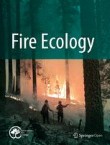Fire Ecology is the official journal of the Association for Fire Ecology.
Ecological Impacts of Fire Trails on Plant Assemblages in Edge Habitat Adjacent to Trails
Fire trails provide access into vegetation for controlled burns in fire-prone regions of the world. We examined the ecological impacts of fire trails on plant assemblages in edge habitat adjacent to trails in ...
